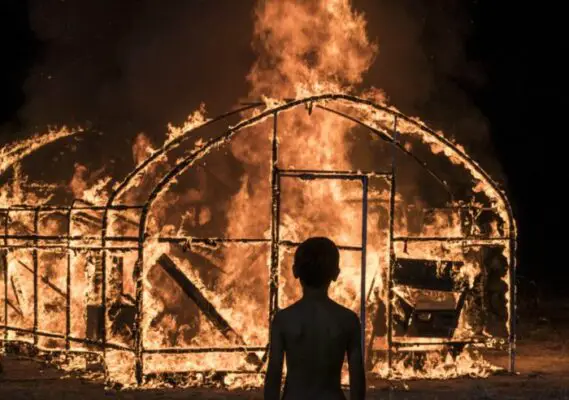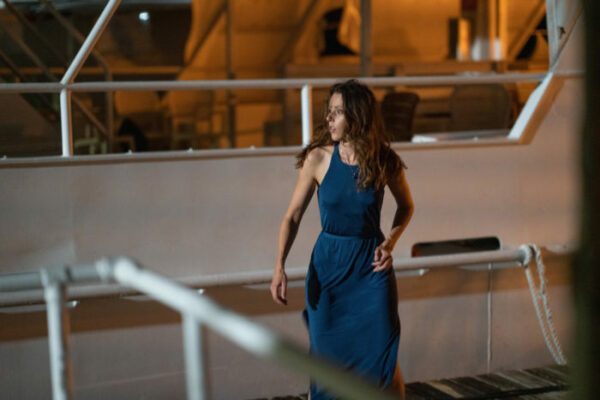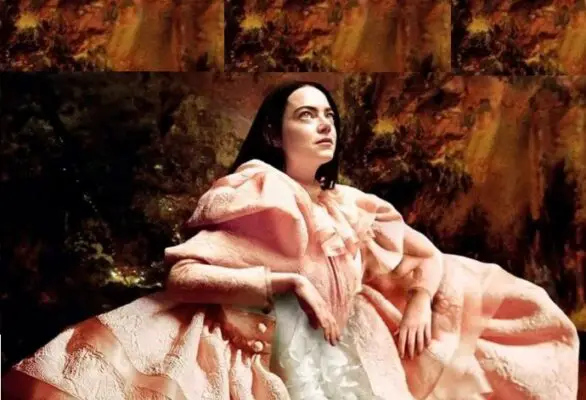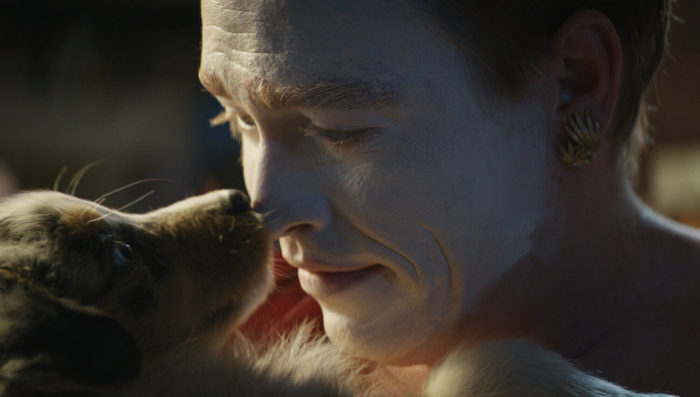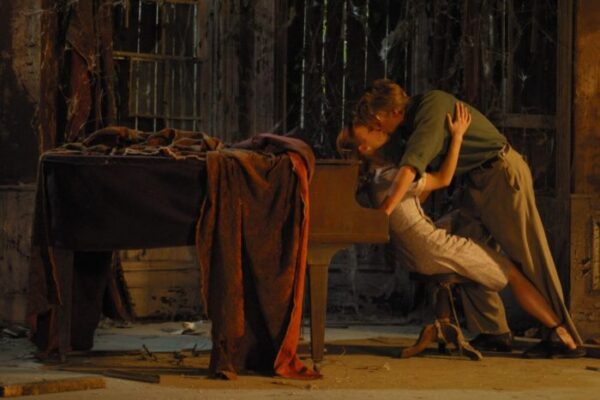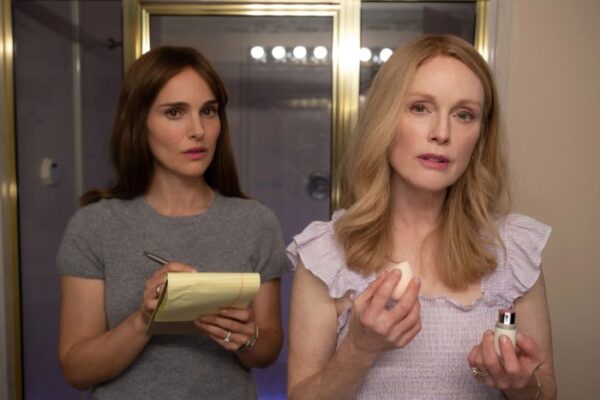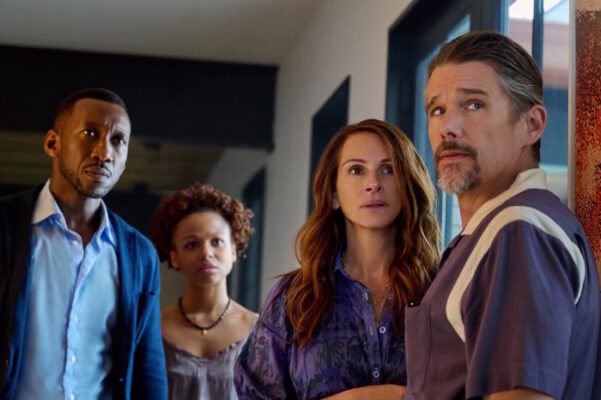The Green Knight (2021) is a very loose and heavily authorized cinematic reading of the Old English poem about Sir Gawain and the Green Knight. A work by an unknown writer dating from the 14th century, translated into modern English by J.R.R. Tolkien. Among other legends of the Arthurian cycle, it stands out in that it contains many metaphors and hidden meanings. This causes heated debate and maintains interest in history from the directors of theatrical plays, cartoons and feature films. After two attempts at film adaptation (1973 and 1984), after almost 40 years, it was decided to make a third. Directed by David Lowry, the project was sponsored by A24.
The search for meaning behind the film adventures of King Arthur’s nephew is very different between those who are familiar with the original legend and those who have not read the poem. In his “Legend of the Green Knight” Lowry deviates significantly from the source, allows a number of ideological differences, uses new dramatic solutions, and adds a lot of mysticism. It is important that the image of the protagonist is conceptually changed in the film.
Gawain is not a noble knight “without fear and reproach”, not a brave and innocent youth who delights with his virtues. He is a simple man with his vices: he does not shine with courage, prefers to spend his days in idleness, does nothing that would make him respect. The screen character “does not catch” the viewer at the beginning, does not give a reason for sympathy until the very end. At the time of the action, the young man is already a knight, but has not yet committed a glorious deed, which should make him a model of courage for those around him. This is the starting point of the plot.
On Christmas Eve, in the knight’s hall, Gawain is offered a test: to fight the Green Knight. According to the conditions, the tournament is more like a game: after some time they will have to meet in a rematch, where the loser will return the debt to the winner in the form of the same blow of the same force that he misses now. The intrigue of the beginning of the plot lies in the fact that all this was organized by his mother, Fairy Morgana, the sister of King Arthur. Worried about her son’s reputation and wanting to make it easier for him, she conjured up a chance to become famous easily. Inflicting even a slight blow (poking, scratching) on the enemy is already counted as a heroic deed worthy of the title of knight. The son may not fight at full strength and get by with “little blood”. But things didn’t go according to her plan.
Gawain’s daring prowess caused him to slash with his sword “with all his foolishness” and blow off his opponent’s head. To the amazement of those present, the Green Knight does not die. This means that in 1 year and 1 day you will have to meet him in order to take a retaliatory strike. Will it be fatal for the hero? The answer to the question becomes clear only after the final flash forward of the film. At the appointed time, Gawain leaves Camelot to go to the Green Knight’s fortress. Here again, the power of maternal love intervenes. Morgana supplies her son with an amulet: a charmed green belt will save him from bodily harm.
The chain of mysterious and dangerous events that the young man becomes involved in is a test of his physical abilities and moral qualities. Meeting with the soothsayer Winifreda, an interlude involving giants, bandits, a fox-like animal in the forest, the house of Lord Bertilak and the spell of his wife. Despite the power of the magical garter, Gawain fails absolutely all the tests of virtue: generosity, courage, ambition, chastity, and honesty “fly into the pipe”. However, during the journey, the young man grew wiser, learned a lot. He thought about how he would return home and begin to live on – a loser and an unworthy person.
Before meeting with the Green Knight, Gawain is visited by a vision, the essence of which can be conveyed by the proverb: “a coward dies a thousand times, a brave man – only once.” He takes off his amulet belt – and the denouement is obvious. The Knight of Camelot takes the killing blow from the Green Knight, which he accompanies with the words “off with your head”. It becomes clear that the film showed the entire possible inglorious life of Gawain. He didn’t want to, so he lost his head.
The meaning of the film The Green Knight is honesty, first of all, to oneself. A real knight should be with honor and dignity, even if he knows that he is going to his death.
The Green Knight deviates from the traditional story about the exploits of a noble hero, where he deftly passes all the tests and receives a princess as a reward. The test for knighthood here is different. And the story about the “journey for honor” itself is shown from the point of view of an ordinary person. These are thoughts about a difficult path, about sacrifices and a reward for a sacrifice, about a selfless act, about loyalty to one’s principles. In general, the film should be perceived as a metaphor for the inner growth of a person, the improvement of his personality. In a fairy-tale form, the process of growing up a boy, the formation of his character and turning into a man is described.
The film adaptation of the Old English poem plunges us into the atmosphere of a medieval fairy tale with a moralistic twist – about how to be a proper knight and a good Christian. The necessary perception is facilitated by the understanding that this is by no means an adventure movie for a wide audience, but an uncompromising art house.
